The Plague 1597-1598
Scottish raids were not the only source of anxiety for the people of Penrith. From 1345 the town suffered intermittent outbreaks of plague that decimated the local population.
The worst epidemic began in September 1597 and continued until the end of the following year. It is thought the plague was brought in by Andrew Hodgson, a ‘stranger’ who stayed in lodgings on King Street (now the premises of the Penrith Building Society) and who was the first person to die of the epidemic in Penrith.
The plague had made its way from Newcastle to Kirkoswald, and from there to Penrith, Appleby and Kendal. The nearby village of Edenhall was also affected.
It is estimated that around one-third of the population of Penrith died during those 15 months. The churchyard soon ran out of burial space, so the dead were interred in the nearby schoolyard. Once this was full of bodies, new graves were dug on the fellside leading up to the Beacon. This area (situated between Wordsworth Street and Graham Street) is recalled in the name ‘Plague Lonnin’ where, according to an old belief, ‘the birds never sing’.
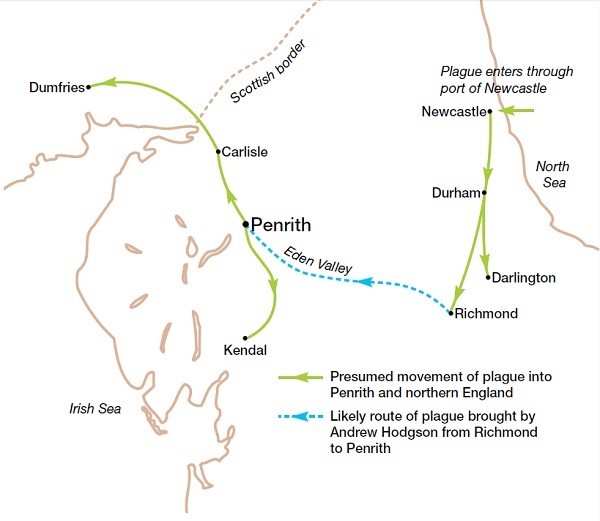
Map showing progress of the plague in north England
The vicar of St Andrew’s Church, William Walleis, recorded the progress of the great pestilence and listed the names of the dead in the parish register, prefaced with the ominous words, ‘Here begonne [began] the plague (God punismet) in Penrith.’ Names marked with a ‘P’ died of the infection and those marked with ‘f’ or ‘fell’ were buried at Plague Lonnin.
Those infected were confined to their homes and left to their fate. One of the first victims was well-to-do Lancelot Musgrave of Musgrave Hall, whilst another was recorded as ‘poor boy, unknown, who was buried on the fell’.
On 13 December 1598, after months of human suffering, the vicar recorded his last words on the plague with ‘Here endeth the visitation’.
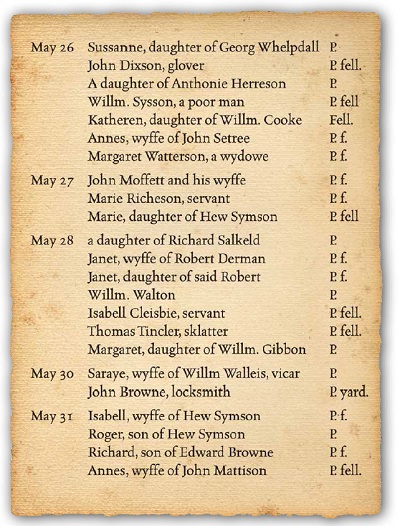
Entries from the parish register, recorded by William Walleis 1597-98
Cumbria County Council (Carlisle Library)
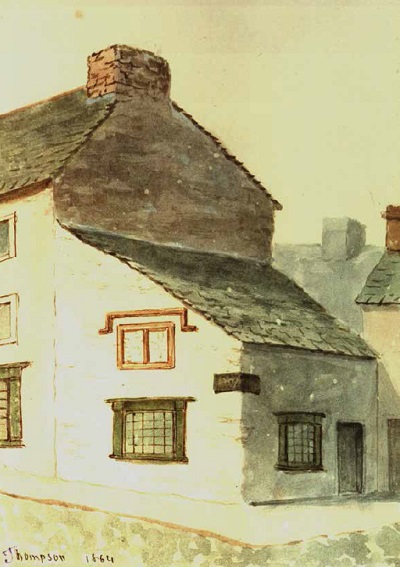
Painting by John Thompson (1864) of the house where the plague started in Penrith
Cumbria County Council (Penrith Library)
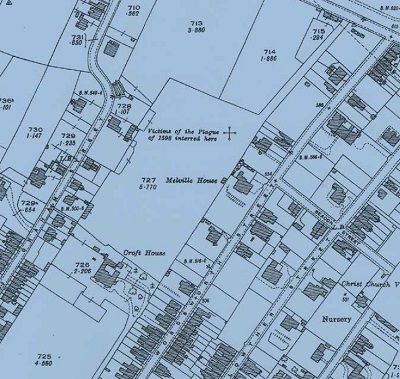
1925 map showing location of Plague Lonnin
Cumbria County Council (Carlisle Library)
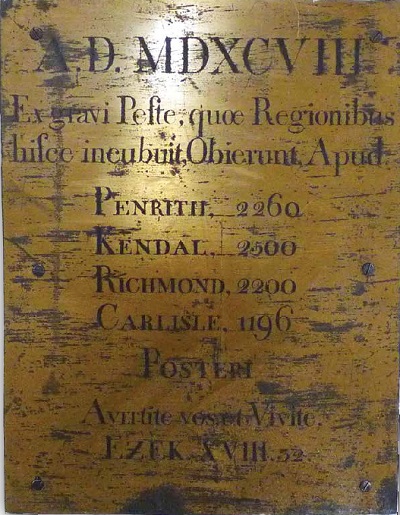
Brass inscription in St Andrew’s Church, Penrith
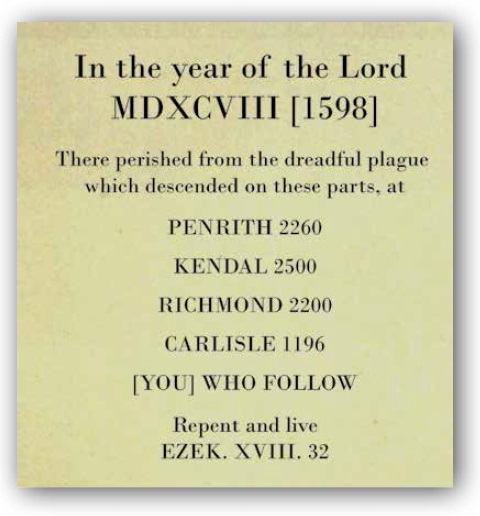
A translation of the brass inscription. The figure for Penrith is thought to include the outlying parishes as well as the town.
All regular markets were suspended and people struggled to find enough food to eat. During this time ‘plague stones’ were set up to the north and south of the town, where people could leave food in return for payment. The hollowed blocks of stone held vinegar or some other agent to disinfect the coins. Another plague stone can be seen near St Cuthbert’s Church at Edenhall.
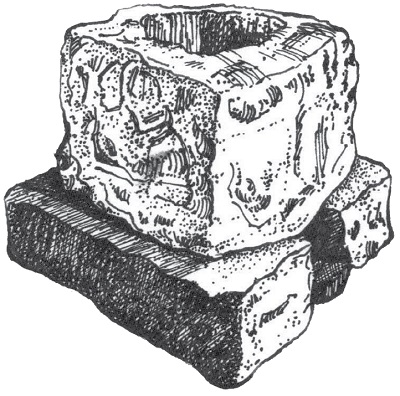
The plague stone outside Greengarth on Bridge Lane, Penrith
by Juliet Whitworth
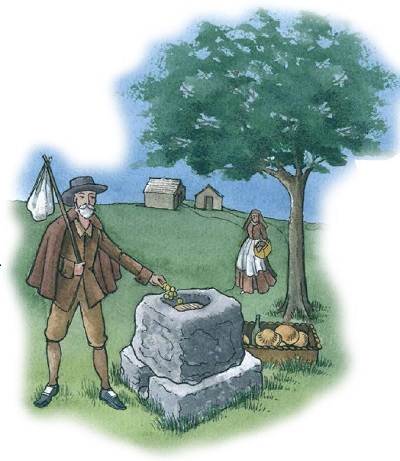
Plague stone, where people could leave food in return for payment

